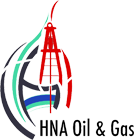Myanmar is actively engaged in bolstering its Energy & Infrastructure sector through an ambitious program aimed at addressing existing shortfalls and meeting the nation’s growing needs. The National Electrification Plan (NEP), a collaborative effort with the World Bank and the UN, outlines key milestones toward achieving full electrification, targeting 50% access by 2020, 75% by 2025, and complete electrification by 2030, with 20% of the power derived from renewable sources.
The plan involves adding an estimated 20 GW of generation capacity, equivalent to 175,200 TWh per year at 100% capability utilization. To reach this goal, approximately 50-100 power projects will need development, marking one of the most significant energy transformations comparable to China’s exponential capacity expansion over the past 15 years.
A major focus of early efforts is the extension of the grid, given the inadequacy of the existing transmission system in terms of capacity, maintenance, and coverage. The plan entails expanding existing medium-volt infrastructure, adding 20,000 km of new low-voltage lines, incorporating local connections, and installing public lights. By 2020, around 1.7 million connections were expected to be established at a cost of $700 million, followed by connecting 7.2 million households to the grid with an investment of $6 billion.
The NEP’s total cost is substantial, with an estimated $20 billion for meeting generation goals and an additional $10 billion for expansion, according to the World Bank.
In terms of the energy mix, Myanmar’s Energy Master Plan calls for a significant adjustment in the use of energy sources by 2030. The plan involves reducing hydropower’s share from 70% to 57%, decreasing natural gas from 28% to 8%, increasing coal’s share from 2% to 30%, and introducing solar energy at 5%.
Recognizing the need for a legal and regulatory framework, active engagement with civil society and environmental groups, and fair distribution of benefits, the plan also emphasizes the establishment of these critical components within the sector.
Despite being an oil producer since the 19th century, Myanmar has faced challenges due to Western sanctions and complexities. However, with increased domestic demand for hydrocarbons, the country has witnessed growth in investment and production. The partnership with China in the oil and gas pipeline, operational since 2015, facilitates resource movement from Kyaukphyu to Kunming, bypassing the Straits of Malacca. In light of these developments, the HNA Myanmar management team has decided to establish a standard private energy company. Their focus extends beyond energy opportunities to include carbon reduction and addressing climate change concerns.

